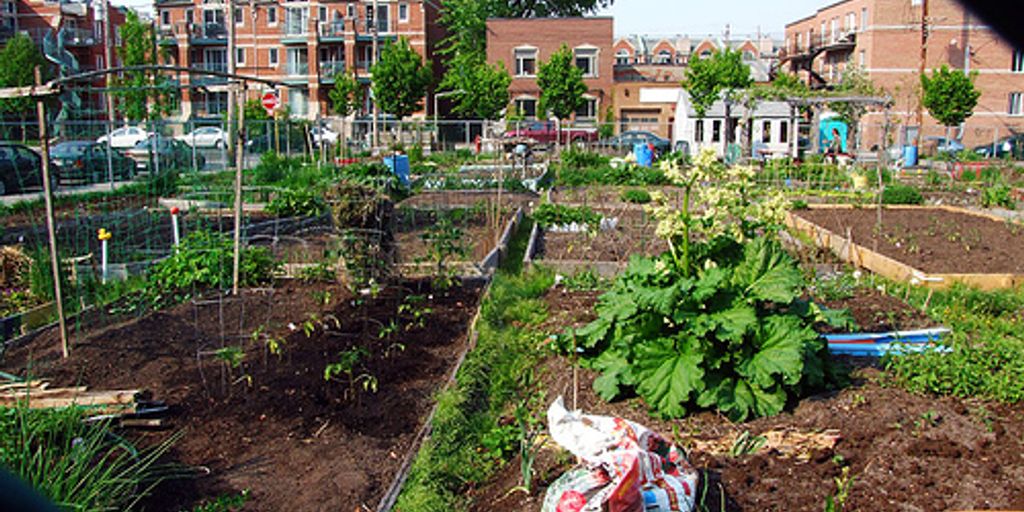
Parenting is a fulfilling yet demanding experience, with its share of joys and challenges, successes and setbacks. It’s easy to feel overwhelmed as a parent in today’s fast-paced world. This guide offers valuable tips and strategies for positive parenting, covering everything from child development stages to creating a supportive and caring atmosphere. Whether you’re a first-time parent or have years of experience, this guide will provide you with fresh insights and ideas to help you on your parenting journey.
Key Takeaways
- Positive parenting focuses on nurturing and guiding children with love, respect, and empathy.
- Effective communication and fostering trust are essential for building strong parent-child relationships.
- Setting clear boundaries and using natural consequences can promote self-discipline in children.
- Supporting emotional development involves recognizing, validating, and teaching emotional regulation.
- Encouraging independence and responsibility helps children develop problem-solving and decision-making skills.
Understanding the Principles of Positive Parenting

Positive parenting is a philosophy that emphasizes mutual respect, empathy, and positive reinforcement over punishment-based approaches. By embracing the principles of communication, setting boundaries, encouraging independence, modeling positive behavior, and fostering emotional intelligence, parents can create a nurturing environment for their children.
Core Values and Beliefs
At the heart of positive parenting are core values such as respect, empathy, and kindness. These values guide parents in their interactions with their children, helping to build a strong, trusting relationship. Being kind but firm is a key principle, ensuring that children understand expectations while feeling supported and loved.
Benefits for Child Development
Positive parenting has numerous benefits for child development. It fosters emotional intelligence, encourages independence, and helps children develop strong problem-solving skills. Children raised with positive parenting techniques are more likely to exhibit positive behaviors and have better social skills.
Common Misconceptions
There are several common misconceptions about positive parenting. Some believe it is too lenient or that it lacks discipline. However, positive parenting involves setting clear boundaries and using natural consequences to teach children about responsibility and self-discipline. It is not about being permissive but about guiding children with empathy and respect.
Positive parenting is not just a method but a mindset that nurtures a child’s growth and development.
Building Strong Parent-Child Relationships
Building a strong relationship with your child is essential for their emotional and social development. Prioritizing time with your child and fostering open communication are key components.
Effective Communication Techniques
Effective communication is the cornerstone of a healthy parent-child relationship. It involves active listening, empathy, and clear expression of thoughts and feelings. Here are some techniques:
- Active listening: Pay full attention to your child, acknowledge their feelings, and respond thoughtfully.
- Open-ended questions: Encourage your child to express themselves more freely.
- Reflective listening: Repeat back what your child has said to show understanding.
Fostering Trust and Respect
Trust and respect are fundamental to any strong relationship. Start with trust, the foundation of a secure bond. Show respect for your child’s opinions and feelings, and they will learn to respect yours in return. Remember, all relationships take work, and building trust is a continuous process.
Balancing Authority and Affection
Balancing authority and affection is crucial in positive parenting. While it’s important to set boundaries and enforce rules, it’s equally important to show love and affection. This balance helps children feel secure and valued. Here are some tips:
- Set clear and consistent boundaries.
- Use positive reinforcement to encourage good behavior.
- Show affection through words and actions.
Building a great relationship with your child requires effort and dedication. By focusing on effective communication, trust, and a balance of authority and affection, you can create a nurturing environment that promotes your child’s growth.
Positive Discipline Strategies
Setting Clear Boundaries
Positive discipline avoids the use of punishment, shaming, or aggressive behavior. Instead, it promotes understanding and problem-solving. Setting clear boundaries is essential for children to understand expectations and feel secure. This involves explaining rules and the reasons behind them, ensuring consistency, and being firm yet kind.
Using Natural Consequences
Natural consequences are a powerful tool in positive discipline. They allow children to learn from their actions in a safe and controlled environment. For example, if a child refuses to wear a coat, they might feel cold outside. This approach helps children understand the impact of their choices without the need for punishment.
Encouraging Self-Discipline
Encouraging self-discipline involves teaching children to manage their own behavior. This can be achieved through praise and rewards to reinforce good behavior, setting clear expectations and consequences, and practicing active listening. By fostering self-discipline, children learn to take responsibility for their actions and develop a sense of autonomy.
By using these positive discipline strategies, you can build a strong and loving relationship with your child while teaching them important life lessons.
- Spend Quality Time
- Encourage Positive Behavior
- Promote Self-Care for Parents
Supporting Emotional Development
Supporting your child’s emotional development is a cornerstone of positive parenting. It involves creating an environment where they feel safe to express their feelings and learn to manage them effectively.
Promoting Independence and Responsibility
Promoting independence and responsibility in children is crucial for their development into self-sufficient and confident individuals. By gradually giving them more responsibility and freedom, you’re helping them build the skills they need to navigate life successfully.
Age-Appropriate Responsibilities
Assigning age-appropriate responsibilities is a great way to foster independence. For younger children, this might include simple tasks like tidying up toys or helping set the table. As they grow older, responsibilities can increase in complexity, such as managing their own homework or helping with household chores. Acknowledge and celebrate small milestones as your child takes on new responsibilities independently. Positive reinforcement boosts self-esteem and motivates them to take on more challenges.
Encouraging Problem-Solving Skills
Fostering independence from a young age helps a child develop problem-solving skills, self-reliance, and confidence. Encourage your child to think critically and come up with solutions to their problems. This can be done through independent and unstructured play, which is very important for fostering creativity, problem-solving, and autonomy. However, most preschool children will still need guidance and support as they navigate these new challenges.
Fostering Decision-Making Abilities
Encouraging children to make their own decisions and take responsibility for their actions helps them develop a strong sense of self and builds their self-esteem. Parents can support their journey towards independence by guiding them, providing growth opportunities, and nurturing a loving and supportive environment. Remember, the goal of encouraging independence is to help your child develop into a self-sufficient and confident individual.
It can be scary to give your kids more independence, especially when they’re young, but it’s incredibly important for their development. It often requires stepping back and letting your child take the lead, even if it means they might make mistakes.
Creating a Nurturing Home Environment
Establishing Routines and Rituals
Creating consistent routines and rituals helps children feel secure and understand what to expect daily. This can include regular meal times, bedtime stories, and weekend family activities. Consistency in routines fosters a sense of stability and belonging.
Designing a Positive Physical Space
A well-organized and welcoming home environment can significantly impact a child’s well-being. Ensure that your home is safe, clean, and filled with items that promote learning and creativity. Incorporate spaces where children can play, study, and relax comfortably.
Incorporating Family Activities
Engaging in regular family activities strengthens bonds and creates lasting memories. Consider activities like game nights, outdoor adventures, or cooking together. These shared experiences promote a supportive and nurturing environment, encouraging open communication and trust.
A nurturing home environment is not just about physical space but also about the emotional atmosphere you create. Parents can create a nurturing environment by being present, listening actively, and showing unconditional love and support.
Adapting Positive Parenting to Different Stages
During infancy and toddlerhood, it’s essential to respond quickly to your baby’s needs, such as feeding and cuddling. Establishing routines for feeding and sleeping helps create a sense of stability. Show lots of love through hugs and gentle touches to foster a secure attachment.
As your child grows, fostering a positive parent-child relationship becomes crucial. Engage in bonding activities and spend quality time together. Effective communication and setting clear boundaries are key to helping your child feel understood and secure. Encourage their independence by giving them age-appropriate responsibilities.
Adolescence is a time of significant change and growth. Balancing authority and affection is vital during this stage. Fostering trust and respect through open communication helps your teenager navigate this period with confidence. Encourage self-discipline and support their emotional development by recognizing and validating their feelings.
By tailoring your parenting approach to each stage, you meet your child’s unique needs and foster their overall development.
Conclusion
Positive parenting is a continuous journey that evolves with your child’s growth. By adapting your approach to meet their changing needs at each developmental stage, you can foster a strong bond, support their emotional development, and nurture their independence. Remember to listen, communicate openly, and provide guidance with love and patience. With positive parenting strategies in place, you can help your child thrive and navigate life’s challenges with confidence and resilience. Enjoy the beautiful journey of parenthood, and cherish every moment along the way.
Frequently Asked Questions
What is positive parenting?
Positive parenting is an approach that focuses on nurturing, guiding, and supporting children through respectful communication, empathy, and encouragement. It emphasizes building a strong parent-child relationship and fostering a positive environment for the child’s growth.
How does positive parenting benefit child development?
Positive parenting supports emotional, social, and cognitive development by creating a safe and nurturing environment. It helps children develop self-esteem, emotional regulation, and healthy relationships.
What are some common misconceptions about positive parenting?
Some common misconceptions include the belief that positive parenting is permissive or lacks discipline. In reality, positive parenting involves setting clear boundaries and using constructive discipline strategies to guide behavior.
How can I effectively communicate with my child using positive parenting techniques?
Effective communication in positive parenting involves active listening, empathy, and validating your child’s feelings. It’s important to speak calmly, use positive language, and encourage open dialogue.
What are natural consequences in positive discipline?
Natural consequences are the outcomes that naturally occur as a result of a child’s actions. For example, if a child refuses to wear a coat, they may feel cold. These consequences help children learn from their experiences and make better choices in the future.
How can I foster independence and responsibility in my child?
Encourage age-appropriate responsibilities, involve your child in decision-making, and support their problem-solving skills. Providing opportunities for them to make choices and learn from their experiences helps build independence and responsibility.






